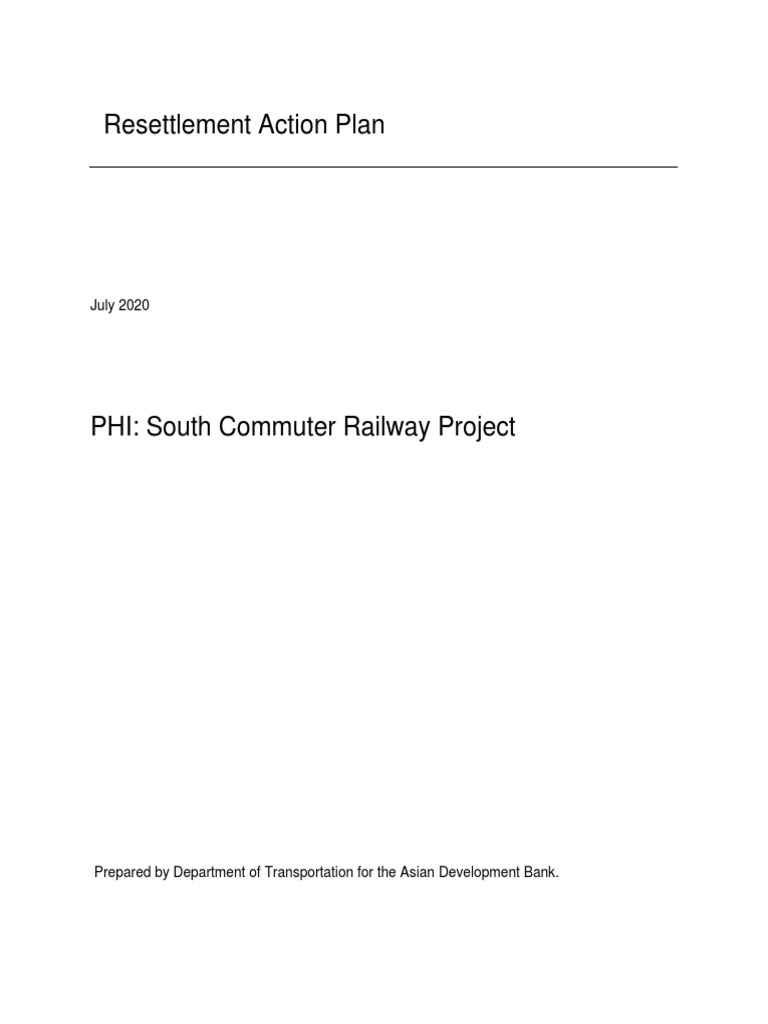Are you aware of what happens when a community faces displacement due to infrastructure development, urban planning, or environmental changes? The real question lies in how these affected individuals and families can mitigate the upheaval in their lives. Enter the Resettlement Action Plan (RAP) — a crucial document that addresses the social, economic, and environmental challenges of resettlement. But what exactly is a RAP, and why is it indispensable in today’s evolving landscape?
At its essence, a Resettlement Action Plan is a comprehensive strategy aimed at managing the impacts that arise when individuals or communities are displaced due to projects initiated by governments or private sectors. Such initiatives could be in the form of infrastructure projects like highways, dams, or airports, as well as environmental programs or urban renewal projects. A well-constructed RAP is not merely a set of guidelines; it is a lifeline that outlines how affected parties are to be supported before and after relocation.
The necessity for a RAP stems from the principles of social justice and sustainability. Resettlement is often accompanied by significant disruption, which can lead to loss of homes, livelihoods, and cultural connections. Therefore, the RAP serves as a blueprint, designed to minimize adverse conditions and ensure that affected communities have equality in their resettlement experience. But, is the execution of a RAP always smooth? The answer is nuanced, as numerous challenges are often encountered along the way.
### Key Components of a Resettlement Action Plan
1. **Baseline Surveys**: A fundamental part of the RAP is conducting thorough baseline surveys. These assessments gather data on the demographics, economic conditions, and social structures of the affected communities. Understanding the baseline status is paramount to creating effective measures tailored to the unique needs of those impacted.
2. **Identification and Valuation of Affected Assets**: The next phase involves identifying not just physical structures such as homes, but also intangible assets like community bonds and historical significance. A thorough valuation process is key to ensuring fair compensation.
3. **Livelihood Restoration Strategies**: Simply compensating individuals for their properties may not set them on a path to success. The RAP must outline strategies for livelihood restoration, which could include job training programs, microfinance options, or agricultural support. The aim is to help affected persons regain, if not surpass, their pre-displacement economic conditions.
4. **Community Participation**: Engaging the affected communities in the planning process is vital for a successful RAP. Their insights can uncover needs and preferences that may not be apparent to external planners. Community participation fosters ownership and enhances the efficacy of the strategies implemented.
5. **Grievance Mechanisms**: Establishing transparent and accessible grievance mechanisms is essential for addressing concerns that may arise before, during, or after the resettlement process. This aspect contributes to restoring trust between authorities and displaced individuals.
6. **Monitoring and Evaluation**: A RAP should also detail how its impacts will be monitored and evaluated over time. Metrics for success can differ, ranging from social cohesion to economic stability. Regular assessments can help identify issues early, allowing for timely interventions.
### Benefits of a Resettlement Action Plan
When effectively implemented, a RAP can yield numerous benefits:
– **Enhanced Social Justice**: A well-articulated RAP promotes equitable compensation and facilitates community engagement, contributing to a sense of fairness in the face of displacement.
– **Mitigation of Negative Impacts**: By comprehensively addressing the diverse repercussions of resettlement, a RAP can diminish the potential for conflict, unrest, or social fragmentation due to the upheaval of established social networks.
– **Environmental Sustainability**: Effective resettlement plans often take into consideration the environmental impacts of displacement, promoting ecological restoration in areas that have been compromised as a result of community relocation.
– **Improved Planning for Future Projects**: The insights gleaned from implementing a RAP can inform future projects, enhancing readiness for potential challenges associated with displacement.
### Potential Challenges in Implementing a Resettlement Action Plan
While a RAP is a vital tool, its implementation can be riddled with challenges. Resistance from affected communities can arise, particularly if trust has been eroded by previous projects. Navigating these waters requires sensitivity and expertise.
Additionally, funding poses a significant hurdle. Without adequate resources allocated to execute the various aspects outlined in the RAP, essential components such as livelihood support or mental health services can fall by the wayside, resulting in fragmented and ineffective support systems.
Finally, bureaucratic red tape can also delay the timely deployment of a RAP. Complex regulatory environments and the need for inter-agency cooperation can slow down effective action, making it crucial for planners and policymakers to be nimble and adaptable.
### Conclusion
A Resettlement Action Plan is an intricate document that orchestrates the multifaceted process of relocating communities. As infrastructure and development needs continue to evolve, the importance of a nuanced and empathetic approach to displacement cannot be understated. Ensuring that RAPs are upheld and refined through practice will not only enhance the resilience of displaced communities but will also foster a spirit of cooperation and understanding among all stakeholders involved. As we confront the realities of modern society, the question remains whether we can truly construct tenable futures for those displaced, and the answer lies within the effectiveness of the RAP.
